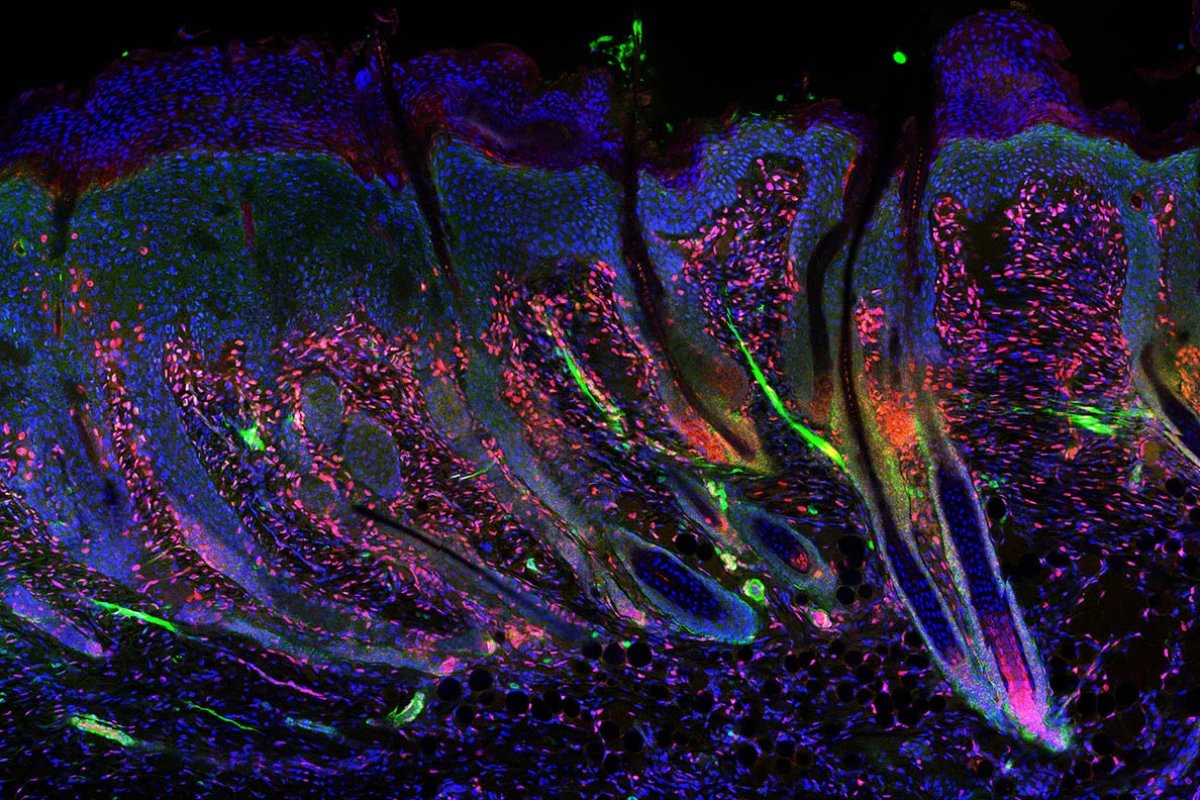When surgery is performed on infants in utero, it's not uncommon for them to be born without any scars. This comes thanks to a special quality of their skin which scientists now believe could be replicated in adults, potentially leading to scar-free wound treatments.
Led by Asst. Prof. Ryan Driskell, a team at Washington State University utilized a technique known as single cell RNA sequencing to compare the genes and cells of both developing (infant) and adult skin. They found that in developing skin, a protein called Lef1 played a role in activating papillary fibroblasts – these are cells in the papillary dermis, which is described as "a layer of skin just below the surface that gives skin its tension and youthful appearance."
In infants, this arrangement helps control the formation of hair follicles (among other things) as the skin is still forming. Once the skin has fully formed, though, the body mostly "turns off" the Lef1. That's why when adults get scars, there are no hair follicles in the scar tissue.
That said, within specialized skin cells in adult lab mice, Driskell's team was able to essentially turn the dormant Lef1 back on. As a result, the animals exhibited significantly less scarring of wounds, to the point that their regrown skin contained hair follicles that could create goosebumps.
Although more work still needs to be done before the findings could be applied to the treatment of human wounds, the research is still enticing.
"We were able to take the innate ability of young, neonatal skin to regenerate and transfer that ability to old skin," says Driskell. "We have shown in principle that this kind of regeneration is possible."
The study is described in a paper that was recently published in the journal eLife.
Source: Washington State University




